Coaches and Conferences: Changes over Time
We pooled together this data and visualized it for a few purposes. We often discuss different coaches in the history of our favorite college football teams and how things have changed since our team left/joined a different conference. However, we often discuss these based on marquee wins and inexcusable losses and perfect or historically terrible seasons, but that doesn't tell the whole story. When we look up the statistics, it can be hard to keep them straight. So, we visualized these changes and compared them between the different Division I football teams in Utah. We hope you find these as interesting as we do. Feel free to read through, scroll through, or just jump to what you find most interesting.
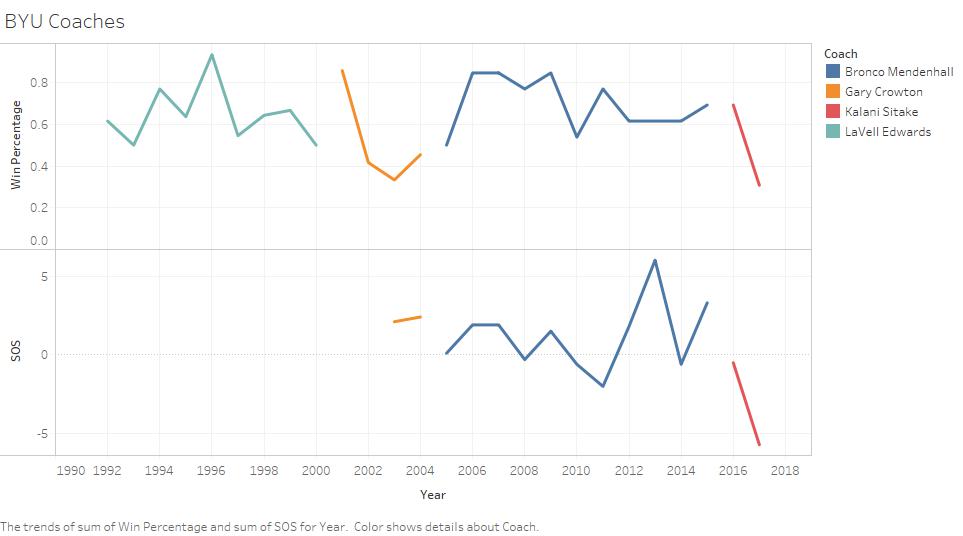
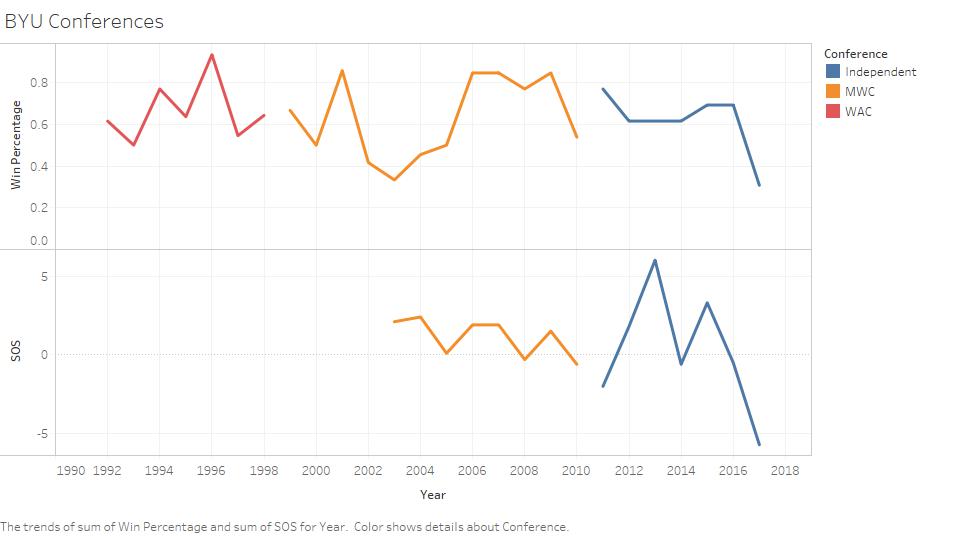

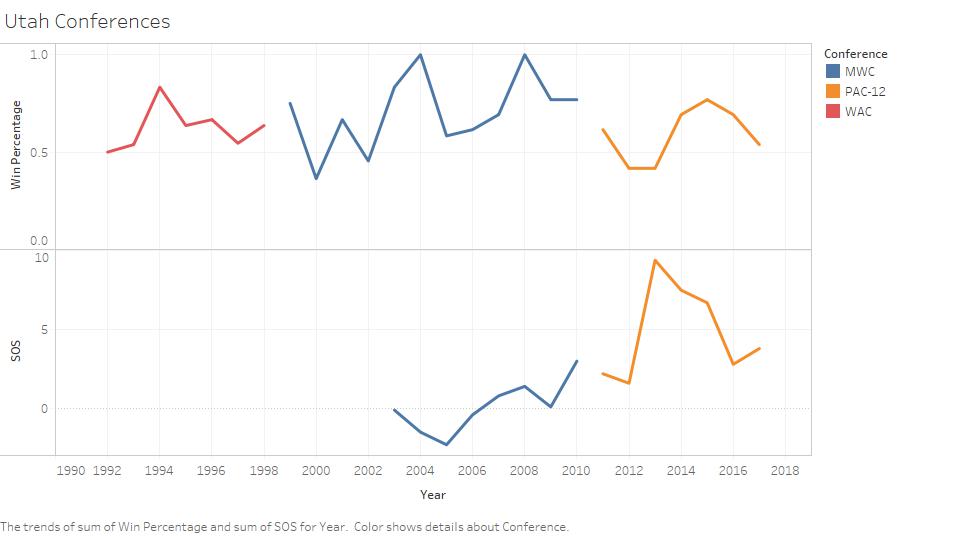


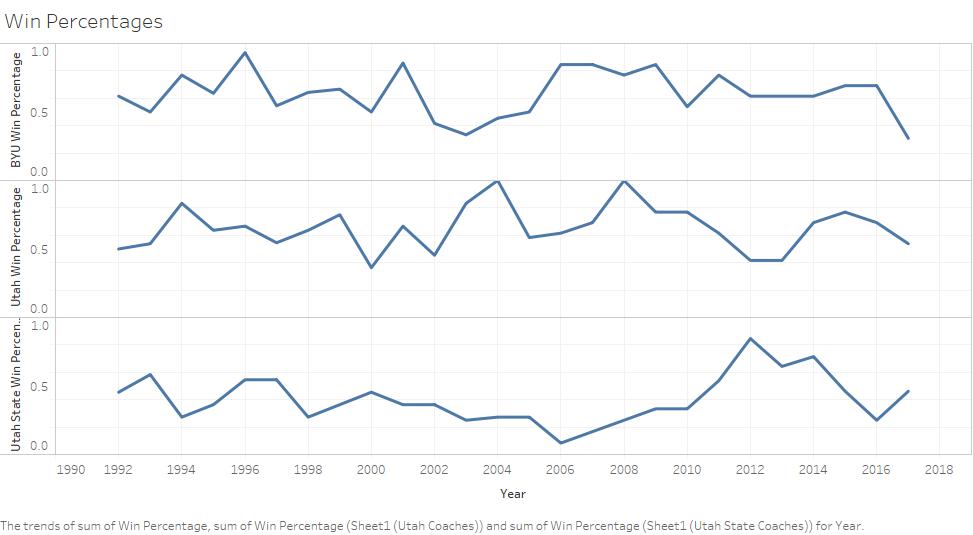
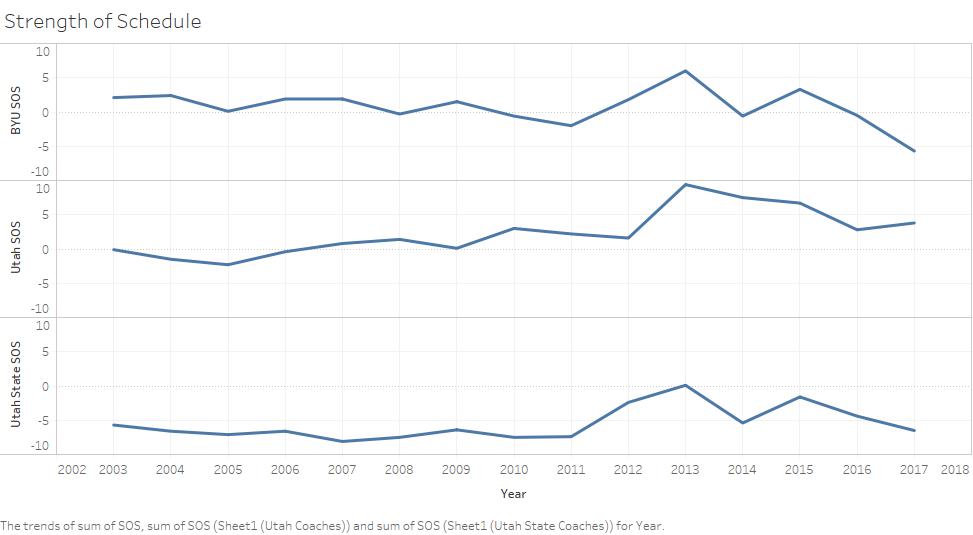
BYU
SOS stands for Strength of Schedule
Bronco Mendenhall plateaued near the end of his tenure. Kalani had a good first year, but a devastating second year, hopefully he is able to rebound. The Gary Crowton drop is obvious, especially with his incredible first year at the helm.
BYU improved towards the end of the MWC and stayed at a high level in the beginning of independence, even with a high level of strength of schedule. The decline really started in Kalani's second year, but we'll see if he rebounds.
Utah
SOS stands for Strength of Schedule
Urban Meyer is considered one of the greatest coaches of all time, and we are not questioning that, but the year Utah went to the Fiesta Bowl (04) was also the year with one of the weakest SOS. Kyle Whittingham was stellar in the beginning of his tenure, took a dip as they shifted conferences, and is working his way back up as the level of competition has risen from the MWC days.
Utah is the only team that their win percentage really seems to be correlated with their strength of schedule. This begs the question, has Utah really improved or gotten worse through the last decade or so, or has their win percentage only really changed because of their strength of schedule? Their strength of schedule certainly got a boost when they joined the PAC-12.
Utah State
SOS stands for Strength of Schedule
First thought, Utah State has gone through a lot of coaches. It would have been very interesting to see what things would be like if Gary Andersen would have stayed. They appear to be on an uptrend, but their schedule was much easier last season. The first game of this season seemed promising, time will tell.
Utah State seemed to get worse and worse until their last couple years in the WAC. Their schedule got harder and they got better, during their time under Coach Gary Andersen. Then they went to the MWC and struggled, the future could be interesting, but we'll see.
Comparison
As you can probably tell from these graphs, and what you saw about coaches, when there is a coaching change there is usually a change in win percentage. Each team has gone through their great seasons and each has had historically awful ones throughout the years. Although, it seems that since teams have become established in their conferences, or independence for BYU, their records are becoming very similar to each other.
SOS stands for Strength of Schedule
The strength of schedule for all three teams really started to be more volatile in 2011, 2012. BYU went independent in 2011, Utah went to the PAC-12, and Utah State went to the MWC in 2013. The strength of schedule has dipped a little for each team lately, but Utah's appears to be rebounding.
Please fill out the survey below, we look at every response and consider them when doing further research.
Please fill out the survey below, we look at every response and consider them when doing further research.
Comments
Post a Comment